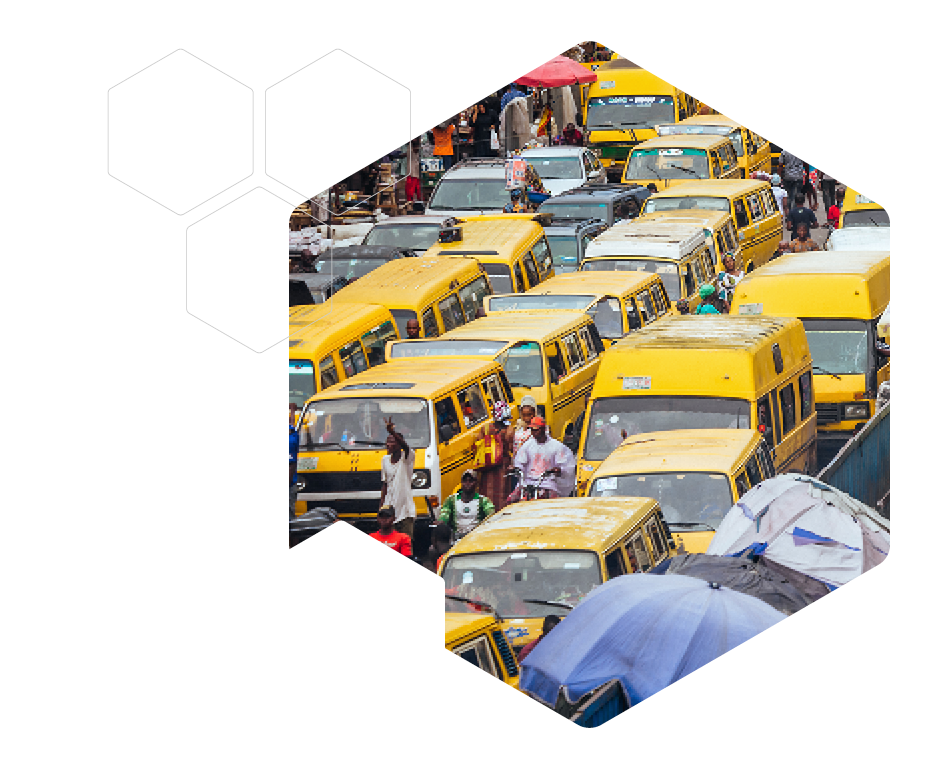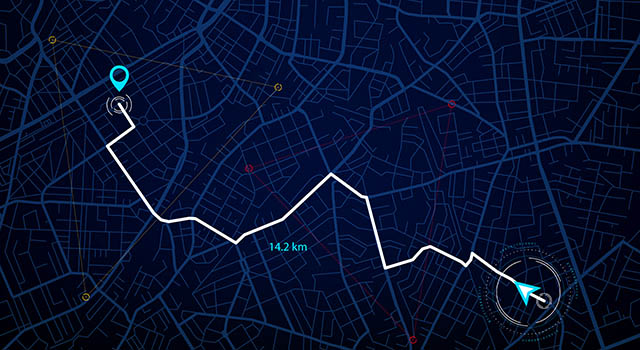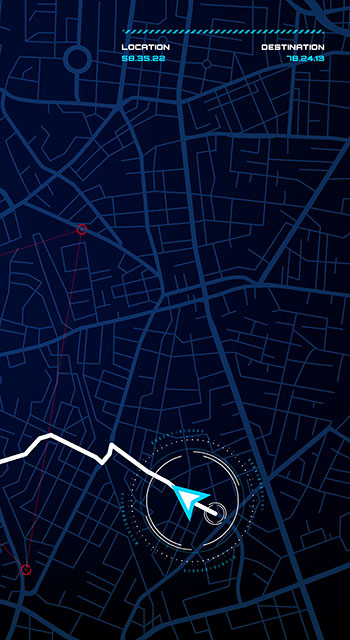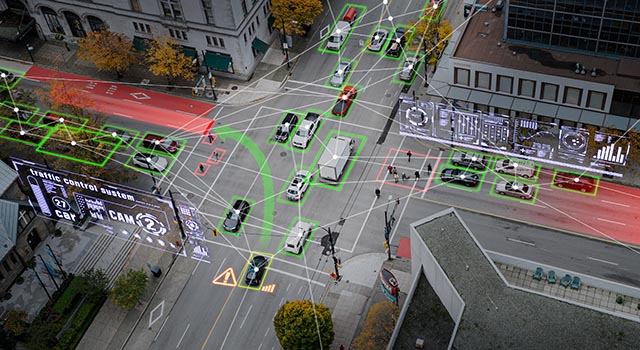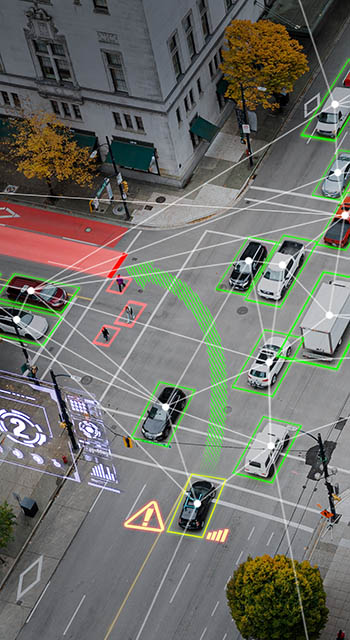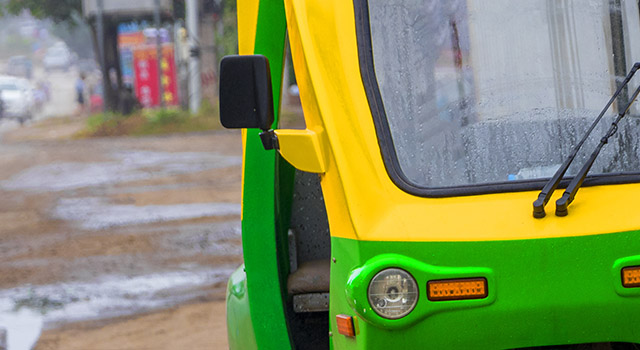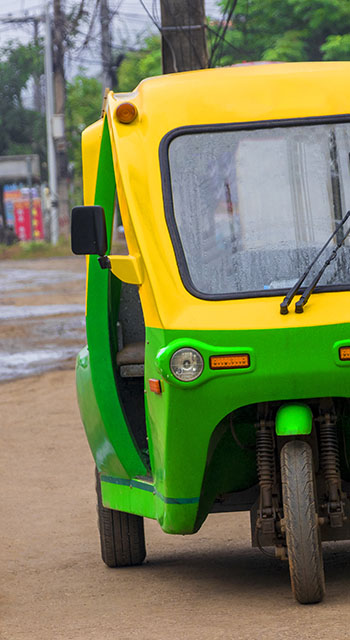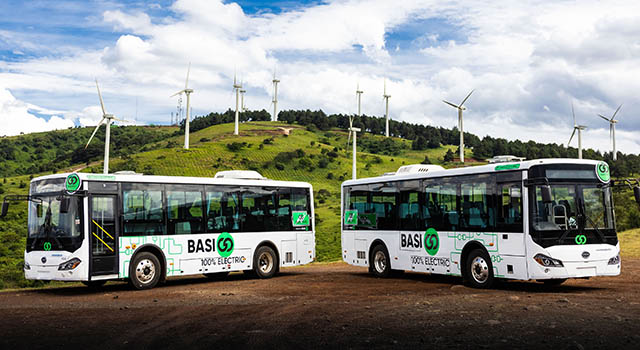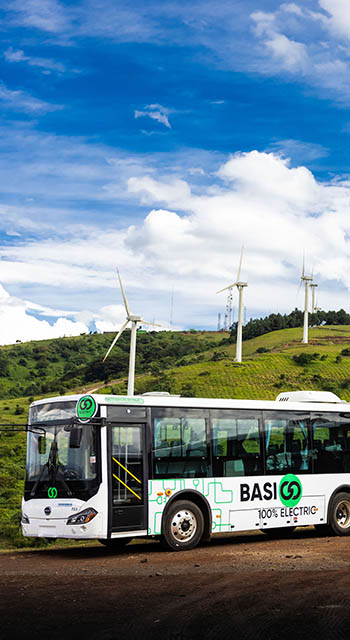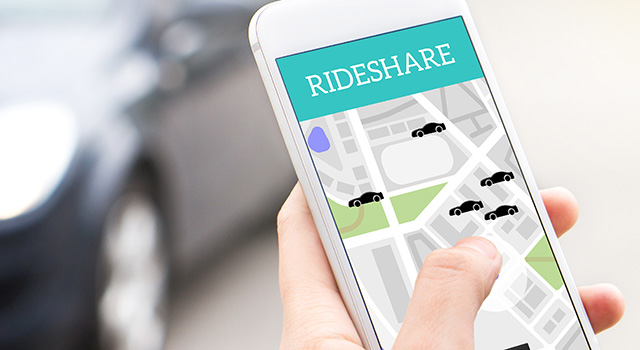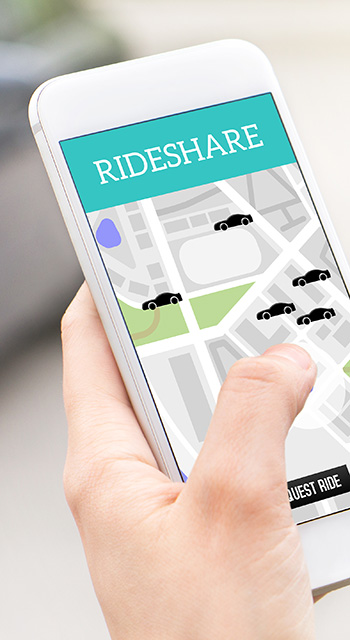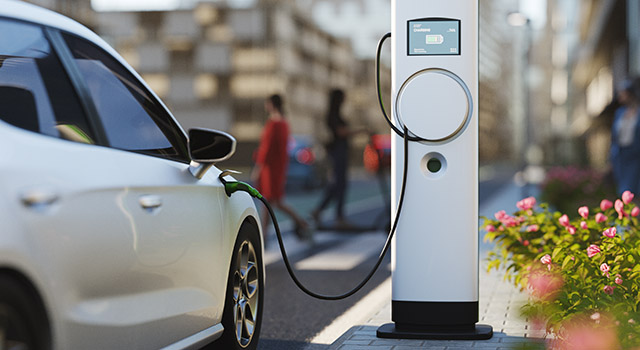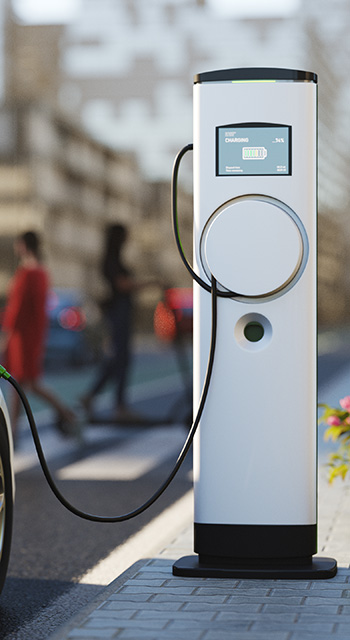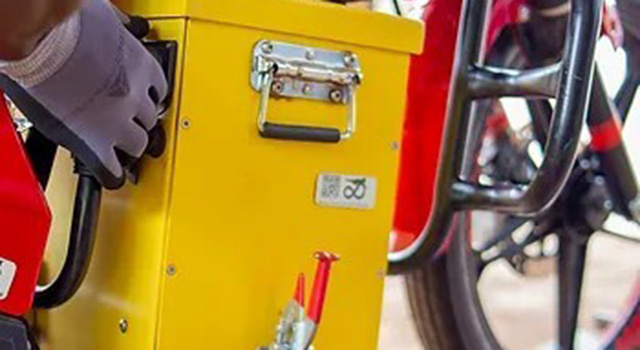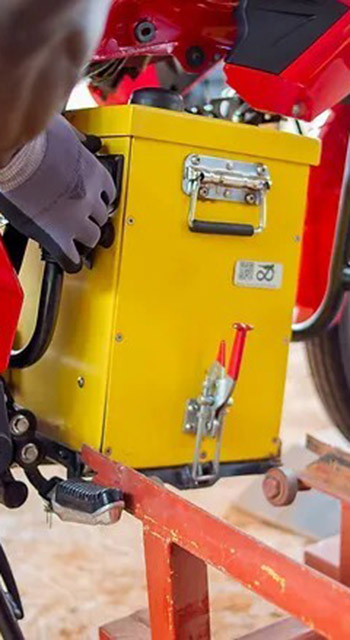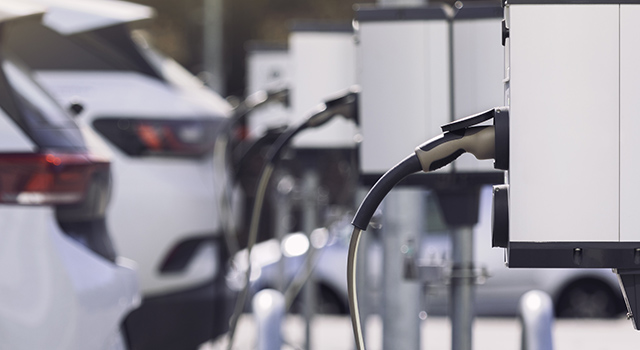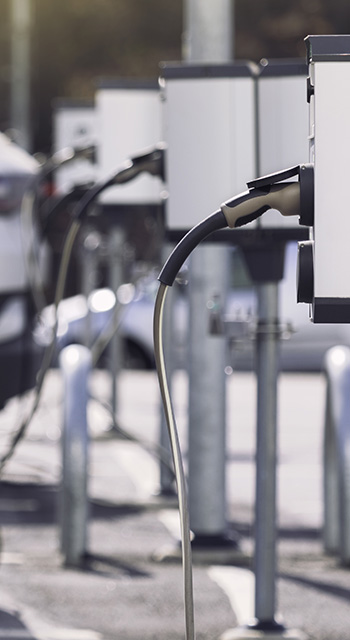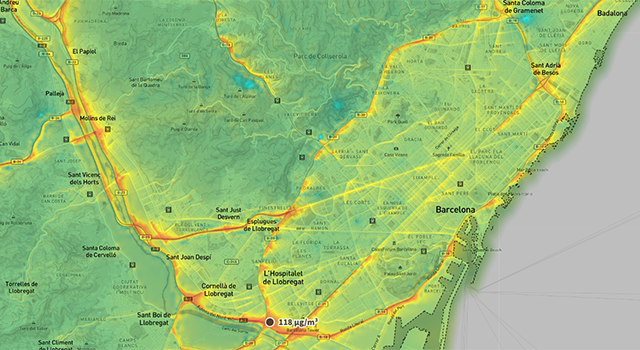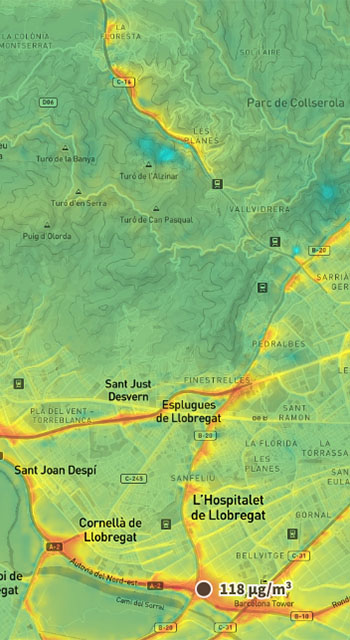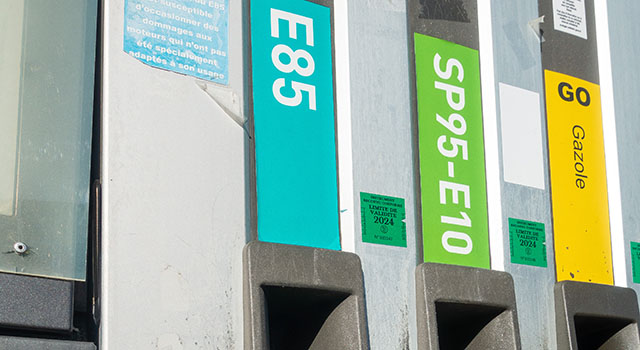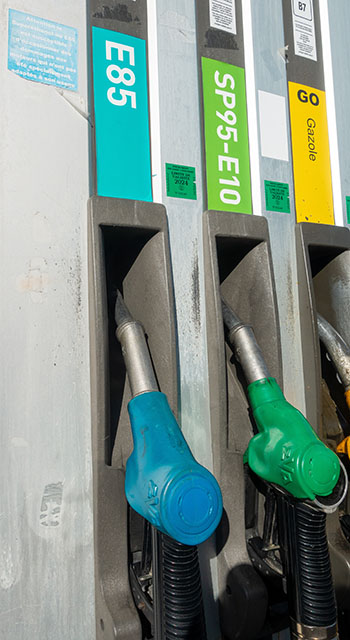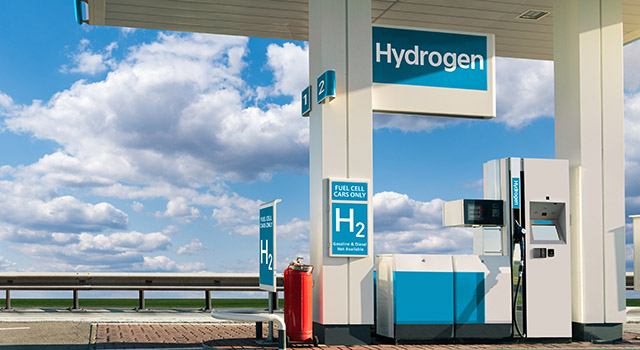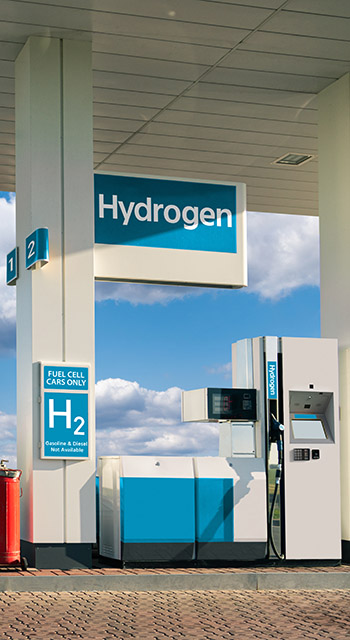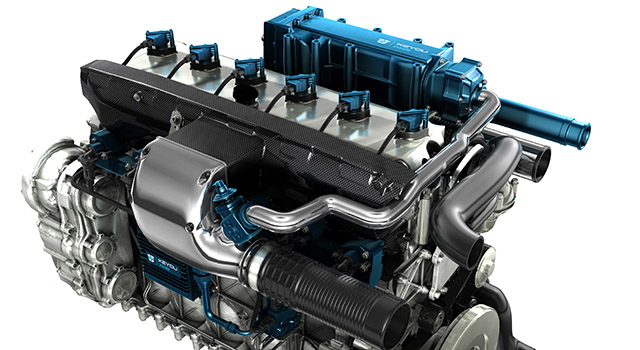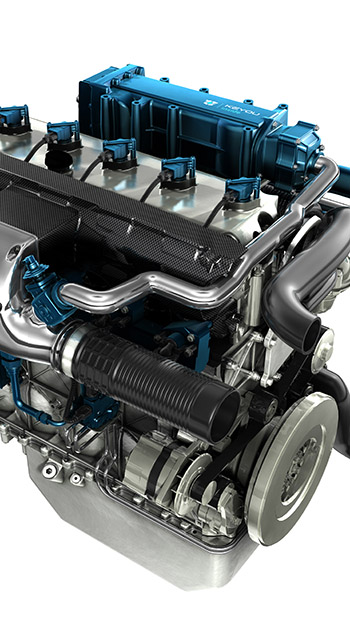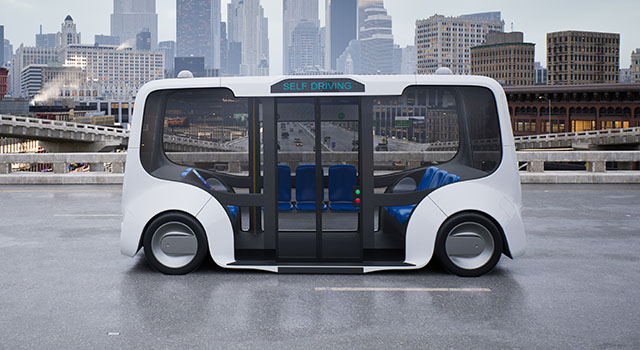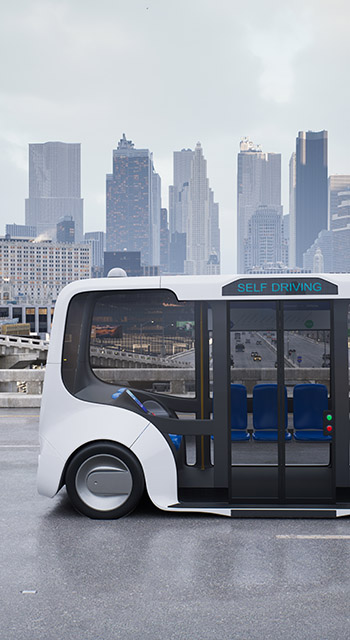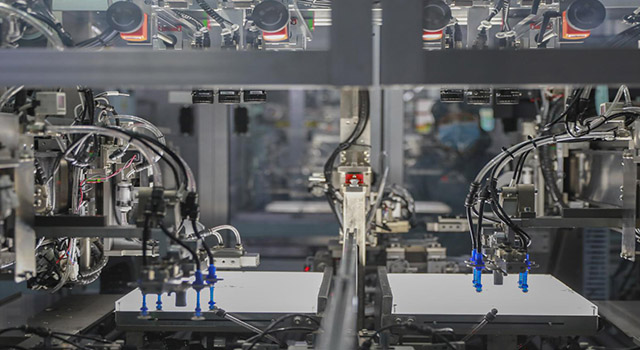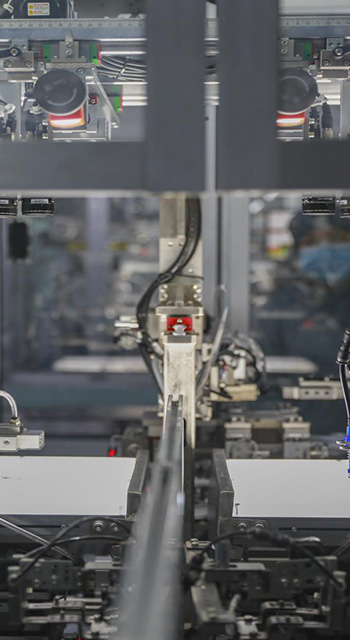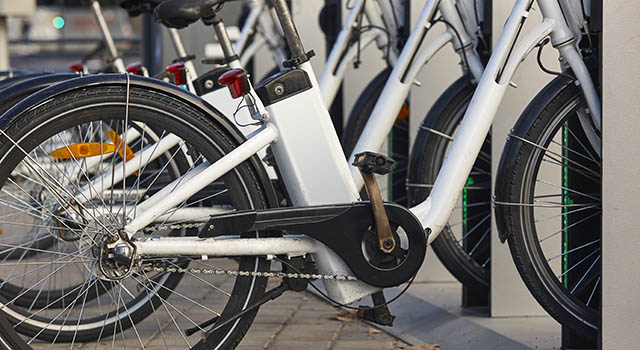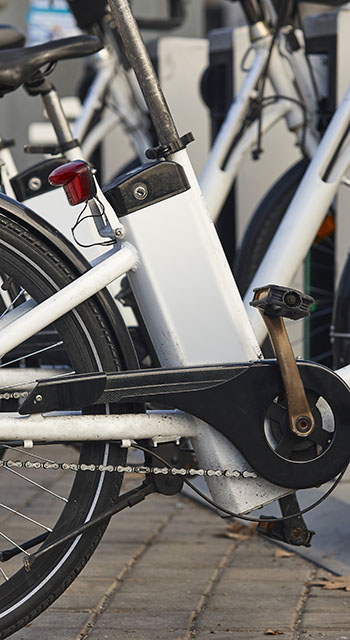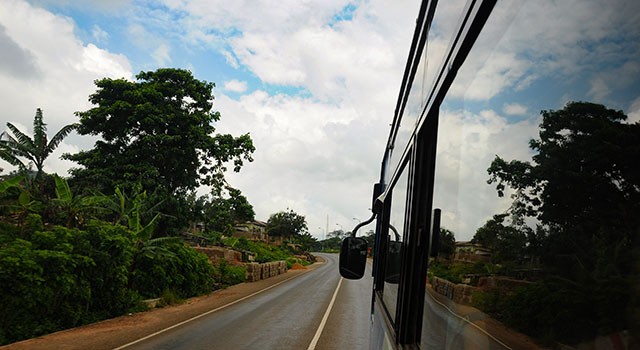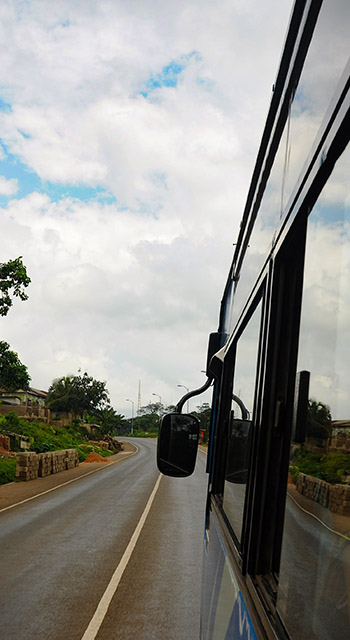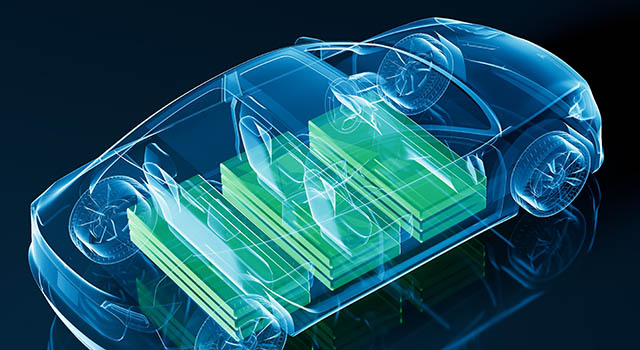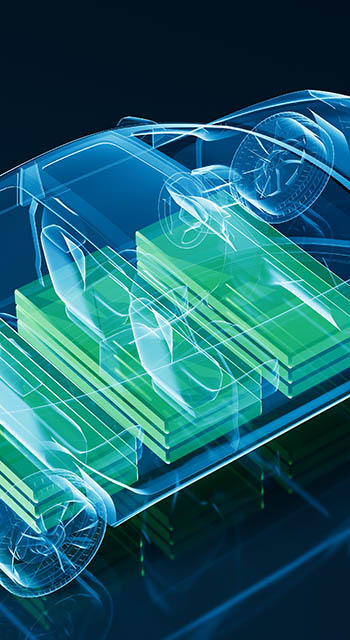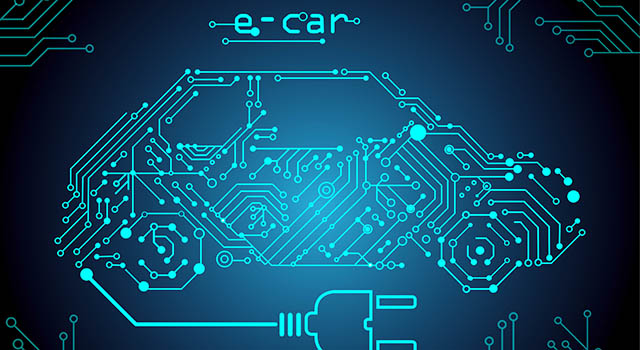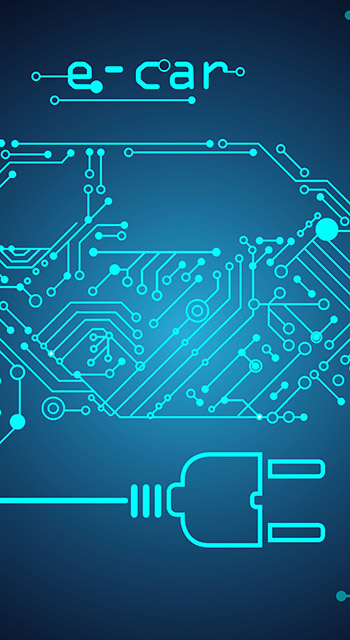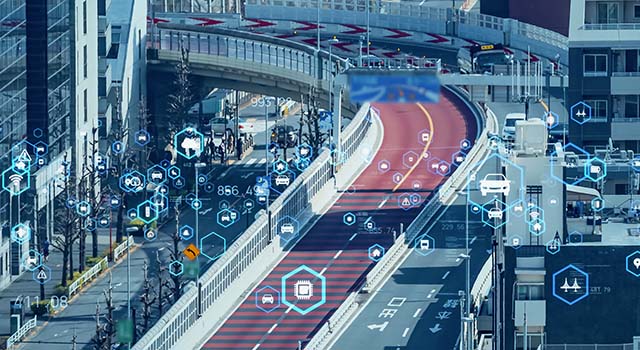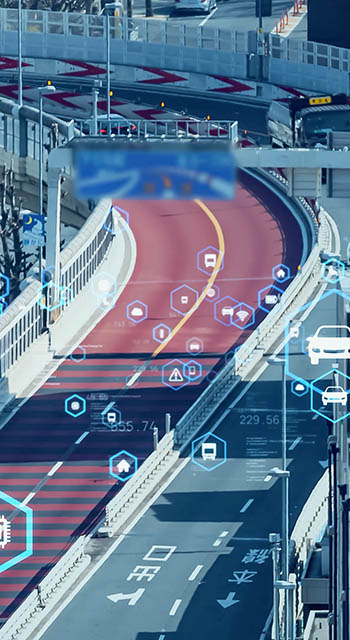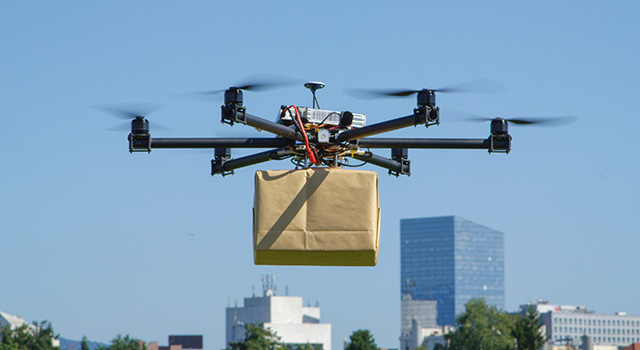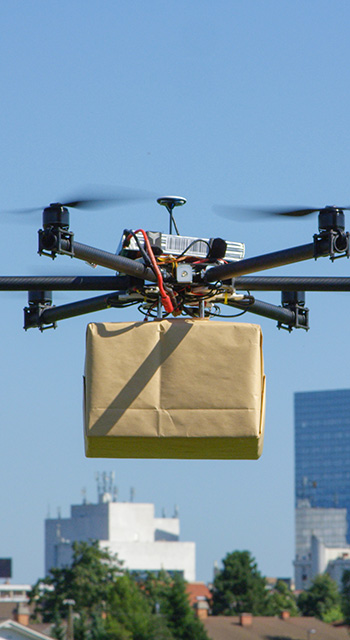Transport emits 23 percent of the world’s energy-related CO2 emissions. Low-carbon technologies and demand-side measures are crucial for mitigating the sector’s climate impact, while providing important co-benefits for air quality and human health. From digital planning tools to electric vehicles, this section explores a range of technological solutions essential for the green mobility transition.
Proven technologies
Frontier technologies
Horizon technologies
Innovation examples
Lucertini, G. and F. Musco (2020). Circular urban metabolism framework. One Earth, 2(2), 138–22.
McKinsey (2023). The future of mobility, McKinsey Quarterly – McKinsey Center for Future Mobility. Available at: https://www.mckinsey.com/industries/automotive-and-assembly/our-insights/the-future-of-mobility-mobility-evolves
Bernhard, A. (2021). The great bicycle boom of 2020. BBC. Available at: https://www.bbc.com/future/bespoke/made-on-earth/the-great-bicycle-boom-of-2020.html [accessed July 2023].
Mutschler, R., et al. (2021). Benchmarking cooling and heating energy demands considering climate change, population growth and cooling device uptake. Applied Energy, 288, 116636.
dos Muchangos, L.S. and A. Tokai (2020). Greenhouse gas emission analysis of upgrading from an open dump to a semi-aerobic landfill in Mozambique – The case of Hulene dumpsite. Scientific African, 10, e00638.
Churkina, G. and A. Organschi (2022). Will a transition to timber construction cool the climate? Sustainability, 14(7), 4271.
Noailly, J. (2022). Directing innovation towards a low-carbon future. Economic Research Working Paper No. 72. Geneva: World Intellectual Property Organization (WIPO). Available at: https://www.wipo.int/publications/en/details.jsp?id=4599&plang=EN
EPO and IEA (2020). Innovation in batteries and electricity storage. International Energy Agency (IEA) and European Patent Office (EPO). Available at: https://www.iea.org/reports/innovation-in-batteries-and-electricity-storage
EPO and IEA (2020). Innovation in batteries and electricity storage. International Energy Agency (IEA), European Patent Office (EPO). Available at: https://www.iea.org/reports/innovation-in-batteries-and-electricity-storage
Olabi, A.G., et al. (2023). Micromobility: Progress, benefits, challenges, policy and regulations, energy sources and storage, and its role in achieving Sustainable Development Goals. International Journal of Thermofluids, 17, 100292.
EPO (2022). Insights into urban mobility. European Patent Office (EPO). Available at: https://www.epo.org/about-us/annual-reports-statistics/statistics/2021/insight-into-smart-urban-mobility.html [accessed August 2023].
Xie, H., et al. (2022). Progress in hydrogen fuel cell technology development and deployment in China. Geneva: WIPO, Global Challenges Division. Available at: https://dx.doi.org/10.34667/tind.44764
UK IPO (2021). Greener buildings and heat pumps. Newport: United Kingdom Intellectual Property Office (UK IPO).Available at: https://www.gov.uk/government/publications/a-worldwide-overview-of-greener-buildings-and-heat-pump-patents
Renaldi, R., et al. (2021). Patent landscape of not-in-kind active cooling technologies between 1998 and 2017. Journal of Cleaner Production, 296, 126507.
Wijewardane, S. (2022). Inventions, innovations, and new technologies: Paints and coatings for passive cooling. Solar Compass, 3–4, 100032.
UNEP (2021). From pollution to solution: A global assessment of marine litter and plastic pollution. Nairobi, Kenya: United Nations Environment Programme (UNEP). Available at: https://www.unep.org/resources/pollution-solution-global-assessment-marine-litter-and-plastic-pollution
OECD (2023). Climate change and plastic pollution, Policy highlights. Organisation for Economic Co-operation and Development (OECD). Available at: https://www.oecd.org/environment/plastics/Policy-Highlights-Climate-change-and-plastics-pollution-Synergies-between-two-crucial-environmental-challenges.pdf
EPO (2021). Patents for tomorrow’s plastics: Global innovation trends in recycling, circular design and alternative sources. Munich, Germany European Patent Office (EPO). Available at: https://www.ovtt.org/wp-content/uploads/2021/10/patents_for_tomorrows_plastics_study_en.pdf
Escobar, N., et al. (2018). Land use mediated GHG emissions and spillovers from increased consumption of bioplastics. Environmental Research Letters, 13, 125005.
EPO (2021). Patents for tomorrow’s plastics: Global innovation trends in recycling, circular design and alternative sources. Munich, Germany European Patent Office (EPO). Available at: https://www.ovtt.org/wp-content/uploads/2021/10/patents_for_tomorrows_plastics_study_en.pdf
CCFLA (2021). The state of cities climate finance. The Cities Climate Finance Leadership Alliance (CCFLA). Available at: https://www.climatepolicyinitiative.org/publication/the-state-of-cities-climate-finance/
CCFLA (2021). The state of cities climate finance. The Cities Climate Finance Leadership Alliance (CCFLA). Available at: https://www.climatepolicyinitiative.org/publication/the-state-of-cities-climate-finance/
UNEP-CCC (2022). The climate technology progress report 2022. Copenhagen, Denmark: Copenhagen Climate Centre (CCC), UNFCCC Technology Executive Committee (TEC) and United Nations Environment Programme (UNEP). Available at: https://unepccc.org/publications/the-climate-technology-progress-report-2022/
CCFLA (2021). The state of cities climate finance. The Cities Climate Finance Leadership Alliance (CCFLA). Available at: https://www.climatepolicyinitiative.org/publication/the-state-of-cities-climate-finance/
CPI (2021). Global landscape of climate finance 2021. Climate Policy Initiative. Available at: https://www.climatepolicyinitiative.org/publication/global-landscape-of-climate-finance-2021/
EMF (2020). Financing the circular economy: Capturing the opportunity. Ellen MacArthur Foundation (EMF). Available at: https://ellenmacarthurfoundation.org/financing-the-circular-economy-capturing-the-opportunity
Aflaki, A., et al. (2015). A review on natural ventilation applications through building façade components and ventilation openings in tropical climates. Energy and Buildings, 101, 153–62.
Anand, V., V.L. Kadiri and C. Putcha (2023). Passive buildings: A state-of-the-art review. Journal of Infrastructure Preservation and Resilience, 4(1), 3.
Cojocaru, A. and D. Isopescu (2021). Passive strategies of vernacular architecture for energy efficiency. Bulletin of the Polytechnic Institute of Iași. Construction. Architecture Section, 67, 33–44.
UNEP (2020). Cooling emissions and policy synthesis report. Nairobi and Paris: United Nations Environment Programme (UNEP) and International Energy Agency (IEA). Available at: https://www.unep.org/resources/report/cooling-emissions-and-policy-synthesis-report
Aflaki, A., et al. (2015). A review on natural ventilation applications through building façade components and ventilation openings in tropical climates. Energy and Buildings, 101, 153–62.
Taleb, H.M. (2014). Using passive cooling strategies to improve thermal performance and reduce energy consumption of residential buildings in U.A.E. buildings. Frontiers of Architectural Research, 3(2), 154–65.
IEA (2022). Heating. International Energy Agency (IEA). Available at: https://www.iea.org/reports/heating
IEA (2022). Renewable heat. International Energy Agency (IEA). Available at: https://www.iea.org/reports/renewables-2022/renewable-heat [accessed November 2023].
IEA (2018). The future of cooling: Opportunities for energy-efficient air conditioning. International Energy Agency. Available at: https://iea.blob.core.windows.net/assets/0bb45525-277f-4c9c-8d0c-9c0cb5e7d525/The_Future_of_Cooling.pdf
Dong, Y., M. Coleman and S. Miller (2021). Greenhouse gas emissions from air conditioning and refrigeration service expansion in developing countries. Annual review of environment and resources, 46.
Dong, Y., M. Coleman, and S. Miller (2021). Greenhouse gas emissions from air conditioning and refrigeration service expansion in developing countries. Annual review of environment and resources, 46.
CCAC (2023). Promoting HFC alternative technology and standards. Climate & clean air coalition (CCAC). Available at: https://www.ccacoalition.org/fr/node/73 [accessed June 2023].
UNEP (2020). Cooling emissions and policy synthesis report. Nairobi, Paris: United Nations Environment Programme (UNEP) - International Energy Agency (IEA). Available at: https://www.unep.org/resources/report/cooling-emissions-and-policy-synthesis-report
UNEP (2020). Cooling emissions and policy synthesis report. Nairobi, Paris: United Nations Environment Programme (UNEP) - International Energy Agency (IEA). Available at: https://www.unep.org/resources/report/cooling-emissions-and-policy-synthesis-report
Pombo, O., B. Rivela and J. Neila (2019). Life cycle thinking toward sustainable development policy-making: The case of energy retrofits. Journal of Cleaner Production, 206, 267–81.
Anand, V., V.L. Kadiri, and C. Putcha (2023). Passive buildings: a state-of-the-art review. Journal of Infrastructure Preservation and Resilience, 4(1), 3.
Pombo, O., B. Rivela, and J. Neila (2019). Life cycle thinking toward sustainable development policy-making: The case of energy retrofits. Journal of Cleaner Production, 206, 267–81.
Menon, J.S. and R. Sharma (2021). Nature-based solutions for co-mitigation of air pollution and urban heat in Indian cities. Frontiers in Sustainable Cities, 3.
Dong, Y., M. Coleman, and S. Miller (2021). Greenhouse gas emissions from air conditioning and refrigeration service expansion in developing countries. Annual review of environment and resources, 46.
IEA (2018). The future of cooling: opportunities for energy-efficient air conditioning. International Energy Agency. Available at: https://iea.blob.core.windows.net/assets/0bb45525-277f-4c9c-8d0c-9c0cb5e7d525/The_Future_of_Cooling.pdf
UNEP (2020). Cooling emissions and policy synthesis report. Nairobi, Paris: United Nations Environment Programme (UNEP) - International Energy Agency (IEA). Available at: https://www.unep.org/resources/report/cooling-emissions-and-policy-synthesis-report
IEA (2018). The future of cooling: opportunities for energy-efficient air conditioning. International Energy Agency. Available at: https://iea.blob.core.windows.net/assets/0bb45525-277f-4c9c-8d0c-9c0cb5e7d525/The_Future_of_Cooling.pdf
IEA (2022). Heating. International Energy Agency (IEA). Available at: https://www.iea.org/reports/heating
IEA (2023). Heat pumps. International Energy Agency (IEA). Available at: https://www.iea.org/fuels-and-technologies/heat-pumps [accessed June 2023].
IEA (2023). Heat pumps. International Energy Agency (IEA). Available at: https://www.iea.org/fuels-and-technologies/heat-pumps [accessed June 2023].
Almogbel, A., et al. (2020). Comparison of energy consumption between non-inverter and inverter-type air conditioner in Saudi Arabia. Energy Transitions, 4(2), 191–97.
De Munck, C., et al. (2013). How much air conditioning can increase air temperatures for a city like Paris (France)? International Journal of Climatology, 33, 210–27.
Dong, Y., M. Coleman, and S. Miller (2021). Greenhouse gas emissions from air conditioning and refrigeration service expansion in developing countries. Annual review of environment and resources, 46.
Xu, Y., et al. (2013). The role of HFCs in mitigating 21st century climate change. Atmospheric Chemistry & Physics, 13, 6083–89.
Dong, Y., M. Coleman, and S. Miller (2021). Greenhouse gas emissions from air conditioning and refrigeration service expansion in developing countries. Annual review of environment and resources, 46.
Dong, Y., M. Coleman, and S. Miller (2021). Greenhouse gas emissions from air conditioning and refrigeration service expansion in developing countries. Annual review of environment and resources, 46.
UNEP (2020). Cooling emissions and policy synthesis report. Nairobi, Paris: United Nations Environment Programme (UNEP) - International Energy Agency (IEA). Available at: https://www.unep.org/resources/report/cooling-emissions-and-policy-synthesis-report
Dong, Y., M. Coleman, and S. Miller (2021). Greenhouse gas emissions from air conditioning and refrigeration service expansion in developing countries. Annual review of environment and resources, 46.
IEA (2022). Heating. International Energy Agency (IEA). Available at: https://www.iea.org/reports/heating
Werner, S. (2017). International review of district heating and cooling. Energy, 137.
Mastrucci, A., et al. (2019). Improving the SDG energy poverty targets: Residential cooling needs in the Global South. Energy and Buildings, 186, 405–15.
IPCC (2023). Synthesis report (SYR) of the IPCC sixth assessment report (AR6): Summary for policymakers. Geneva: Intergovernmental Panel on Climate Change (IPCC). Available at: https://www.ipcc.ch/report/ar6/syr/
Dong, Y., M. Coleman, and S. Miller (2021). Greenhouse gas emissions from air conditioning and refrigeration service expansion in developing countries. Annual review of environment and resources, 46.
EEA (2023). Decarbonising heating and cooling - A climate imperative. Copenhagen, Denmark: European Environment Agency (EEA). Available at: https://www.eea.europa.eu/publications/decarbonisation-heating-and-cooling
PFPI (2018). Letter from scientists to the EU Parliament regarding forest biomass. Partnership for Policy Integrity (PFPI). Available at: https://www.pfpi.net/wp-content/uploads/2018/04/UPDATE-800-signatures_Scientist-Letter-on-EU-Forest-Biomass.pdf [accessed July 2023].
Rahaee, O. (2013). Cultural identity and its effects on indigenous methods of natural ventilation passage of metal smiths in Dezful’s Old Bazzar. The Monthly Scientific Journal of Bagh-e Nazar, 10(24), 39–46.
Mohammadshahi, S., et al. (2019). Investigation of naturally ventilated shavadoons component: Architectural underground pattern on ventilation. Tunnelling and Underground Space Technology, 91, 102990.
ITF (2023). ITF transport outlook 2023. International Transport Forum (ITF). Available at: https://www.oecd-ilibrary.org/transport/itf-transport-outlook-2023_b6cc9ad5-en
IPCC (2023). Synthesis report (SYR) of the IPCC sixth assessment report (AR6): Summary for policymakers. Geneva: Intergovernmental Panel on Climate Change (IPCC). Available at : https://www.ipcc.ch/report/ar6/syr/.
WHO (2012). Health in the green economy: Health co-benefits of climate change mitigation – Transport sector. World Health Organization (WHO). Available at: https://apps.who.int/iris/handle/10665/70913
Kinigadner, J., et al. (2020). Planning for low carbon mobility: Impacts of transport interventions and location on carbon-based accessibility. Journal of Transport Geography, 87, 102797.
IPCC (2023). Synthesis report (SYR) of the IPCC sixth assessment report (AR6): Summary for policymakers. Geneva: Intergovernmental Panel on Climate Change (IPCC). Available at: https://www.ipcc.ch/report/ar6/syr/
Brand, C., et al. (2021). The climate change mitigation effects of daily active travel in cities. Transportation Research Part D: Transport and Environment, 93, 102764.
AlKheder, S. (2021). Promoting public transport as a strategy to reduce GHG emissions from private vehicles in Kuwait. Environmental Challenges, 3, 100075.
Buchanan, M. (2019). The benefits of public transport. Nature Physics, 15(9), 876–76.
UDP (2021). Climate technologies in an urban context. Copenhagen, Denmark: UNEP DTU Partnership (UDP). Available at: https://tech-action.unepccc.org/publications/climate-technologies-in-an-urban-context/
Frączek, B. and A. Urbanek (2021). Financial inclusion as an important factor influencing digital payments in passenger transport: A case study of EU countries. Research in Transportation Business & Management, 41, 100691.
Nikitas, D.A. and P.M. Karlsson (2015). A worldwide state-of-the-art analysis for bus rapid transit: Looking for the success formula. Journal of Public Transportation, 18(1), 1–33.
WRI Brazil (2023). Global BRT data. World Resources Institute (WRI) Brasil Ross Center for Sustainable Cities. Available at: https://brtdata.org/
EEA (2023). Transport and environment report 2022. European Environment Agency (EEA). Available at: https://www.eea.europa.eu//publications/transport-and-environment-report-2022
Furfari, S. (2016). Energy efficiency of engines and appliances for transport on land, water, and in air. Ambio, 45(1), 63–68.
ITF (2023). ITF transport outlook 2023. International Transport Forum (ITF). Available at: https://www.oecd-ilibrary.org/transport/itf-transport-outlook-2023_b6cc9ad5-en
Ivanova, D., et al. (2020). Quantifying the potential for climate change mitigation of consumption options. Environmental Research Letters, 15(9).
Schwanen, T., D. Banister and J. Anable (2011). Scientific research about climate change mitigation in transport: A critical review. Transportation Research Part A: Policy and Practice, 45(10), 993–1006.
Musa, A.A., et al. (2023). Sustainable traffic management for smart cities using Internet-of-Things-oriented intelligent transportation systems (ITS): Challenges and recommendations. Sustainability, 15(13), 9859.
Bharadwaj, S., et al. (2017). Impact of congestion on greenhouse gas emissions for road transport in Mumbai metropolitan region. Transportation Research Procedia, 25, 3538–51.
Le Quéré, C., et al. (2020). Temporary reduction in daily global CO2 emissions during the COVID-19 forced confinement. Nature Climate Change, 10(7), 1–7.
IEA (2023). Global EV outlook 2023. International Energy Agency (IEA). Available at: https://www.iea.org/reports/global-ev-outlook-2023
Transport & Environment (2023). Clean and lean: Battery metals demand from electrifying passenger transport. Brussels, Belgium: Transport & Environment. Available at: https://www.transportenvironment.org/discover/clean-and-lean-battery-metals-demand-from-electrifying-cars-vans-and-buses/
Reck, D.J., H. Martin and K.W. Axhausen (2022). Mode choice, substitution patterns and environmental impacts of shared and personal micro-mobility. Transportation Research Part D: Transport and Environment, 102, 103134.
Tikoudis, I., et al. (2021). Ridesharing services and urban transport CO2 emissions: Simulation-based evidence from 247 cities. Transportation Research Part D: Transport and Environment, 97, 102923.
Tikoudis, I., et al. (2021). Ridesharing services and urban transport CO2 emissions: Simulation-based evidence from 247 cities. Transportation Research Part D: Transport and Environment, 97, 102923.
Reck, D.J., H. Martin, and K.W. Axhausen (2022). Mode choice, substitution patterns and environmental impacts of shared and personal micro-mobility. Transportation Research Part D: Transport and Environment, 102, 103134.
Schaller, B. (2021). Can sharing a ride make for less traffic? Evidence from Uber and Lyft and implications for cities. Transport Policy, 102, 1–10.
IEA (2023). Global EV outlook 2023. International Energy Agency (IEA). Available at: https://www.iea.org/reports/global-ev-outlook-2023
IPCC (2023). Synthesis report (SYR) of the IPCC sixth assessment report (AR6). Summary for policymakers. Geneva: Intergovernmental Panel on Climate Change (IPCC). Available at: https://www.ipcc.ch/report/ar6/syr/
IPCC (2023). Synthesis report (SYR) of the IPCC sixth assessment report (AR6). Summary for policymakers. Geneva: Intergovernmental Panel on Climate Change (IPCC). Available at: https://www.ipcc.ch/report/ar6/syr/
ITF (2023). ITF transport outlook 2023. International Transport Forum (ITF). Available at: https://www.oecd-ilibrary.org/transport/itf-transport-outlook-2023_b6cc9ad5-en
Traugott, J. (2023). California wants to make bidirectional charging mandatory for new electric vehicles. Carbuzz.Available at: https://carbuzz.com/news/california-wants-to-make-bidirectional-charging-mandatory-for-new-electric-vehicles [accessed July 2023].
MIT (2023). Minimizing electric vehicles’ impact on the grid. Massachusetts Institute of Technology (MIT). Available at: https://www.sciencedaily.com/releases/2023/03/230315132448.htm [accessed July 2023].
EEA (2023). Transport and environment report 2022. European Environment Agency (EEA). Available at: https://www.eea.europa.eu//publications/transport-and-environment-report-2022
Daziano, R.A. (2022). Willingness to delay charging of electric vehicles. Research in Transportation Economics, 94, 101177.
Acebedo, B., et al. (2023). Current status and future perspective on lithium metal anode production methods. Advanced Energy Materials, 13(13), 2203744.
IEA (2023). Global EV outlook 2023. International Energy Agency (IEA). Available at: https://www.iea.org/reports/global-ev-outlook-2023
IEA (2023). Biofuels. International Energy Agency (IEA). Available at: https://www.iea.org/energy-system/low-emission-fuels/biofuels [accessed July 2023].
WRI (2023). The global land squeeze: Managing the growing competition for land. World Resources Institute (WRI). Available at: https://www.wri.org/research/global-land-squeeze-managing-growing-competition-land
Merfort, L., et al. (2023). State of global land regulation inadequate to control biofuel land-use-change emissions. Nature Climate Change, 13(7), 610–12.
IEA Bioenergy (2023). Commercial status of direct thermochemical liquefaction technologies. International Energy Agency (IEA). Available at: https://www.ieabioenergy.com/blog/publications/commercial-status-of-direct-thermochemical-liquefaction-technologies/
Westervelt, A. (2023). Big oil firms touted algae as climate solution: Now all have pulled funding. The Guardian. Available at: https://www.theguardian.com/environment/2023/mar/17/big-oil-algae-biofuel-funding-cut-exxonmobil
IPCC (2022). Climate change 2022: Mitigation of climate change – Technical summary, Working Group III contribution to IPCC sixth assessment report. Cambridge, UK: Intergovernmental Panel on Climate Change (IPCC). Available at: https://www.ipcc.ch/report/sixth-assessment-report-working-group-3/
EEA (2023). Transport and environment report 2022. European Environment Agency (EEA). Available at: https://www.eea.europa.eu//publications/transport-and-environment-report-2022
IEA (2023). Transport. International Energy Agency (IEA). Available at: https://www.iea.org/energy-system/transport
ICCT (2020). Beyond biomass? Alternative fuels from renewable electricity and carbon recycling. The International Council on Clean Transportation (ICCT). Available at: https://theicct.org/publication/beyond-biomass-alternative-fuels-from-renewable-electricity-and-carbon-recycling/
Ueckerdt, F., et al. (2021). Potential and risks of hydrogen-based e-fuels in climate change mitigation. Nature Climate Change, 11(5), 384–93.
IEA (2023). Global EV outlook 2023. International Energy Agency (IEA). Available at: https://www.iea.org/reports/global-ev-outlook-2023
Xie, H., et al. (2022). Progress in hydrogen fuel cell technology development and deployment in China. Available at: https://dx.doi.org/10.34667/tind.44764
EEA (2023). Transport and environment report 2022. European Environment Agency (EEA). Available at: https://www.eea.europa.eu//publications/transport-and-environment-report-2022
McKinsey (2023). Autonomous driving’s future: Convenient and connected. McKinsey & Company. Available at: https://www.mckinsey.com/industries/automotive-and-assembly/our-insights/autonomous-drivings-future-convenient-and-connected [accessed September 2023].
Kreier, F. (2022). Drones bearing parcels deliver big carbon savings. Nature.
EIT Urban Mobility (2022). Urban mobility next 8: Expectations and success factors for urban air mobility in Europe. Barcelona, Spain: EIT Urban Mobility. Available at: https://www.eiturbanmobility.eu/wp-content/uploads/2022/11/EIT-UrbanAirMobility.pdf
Furfari, S. (2016). Energy efficiency of engines and appliances for transport on land, water, and in air. Ambio, 45(1), 63–68.
Furfari, S. (2016). Energy efficiency of engines and appliances for transport on land, water, and in air. Ambio, 45(1), 63–68.
Dabros, T.M.H., et al. (2018). Transportation fuels from biomass via fast pyrolysis, catalytic hydrodeoxygenation, and catalytic fast hydropyrolysis. Progress in Energy and Combustion Science, 68, 268–309.
See Notes here
